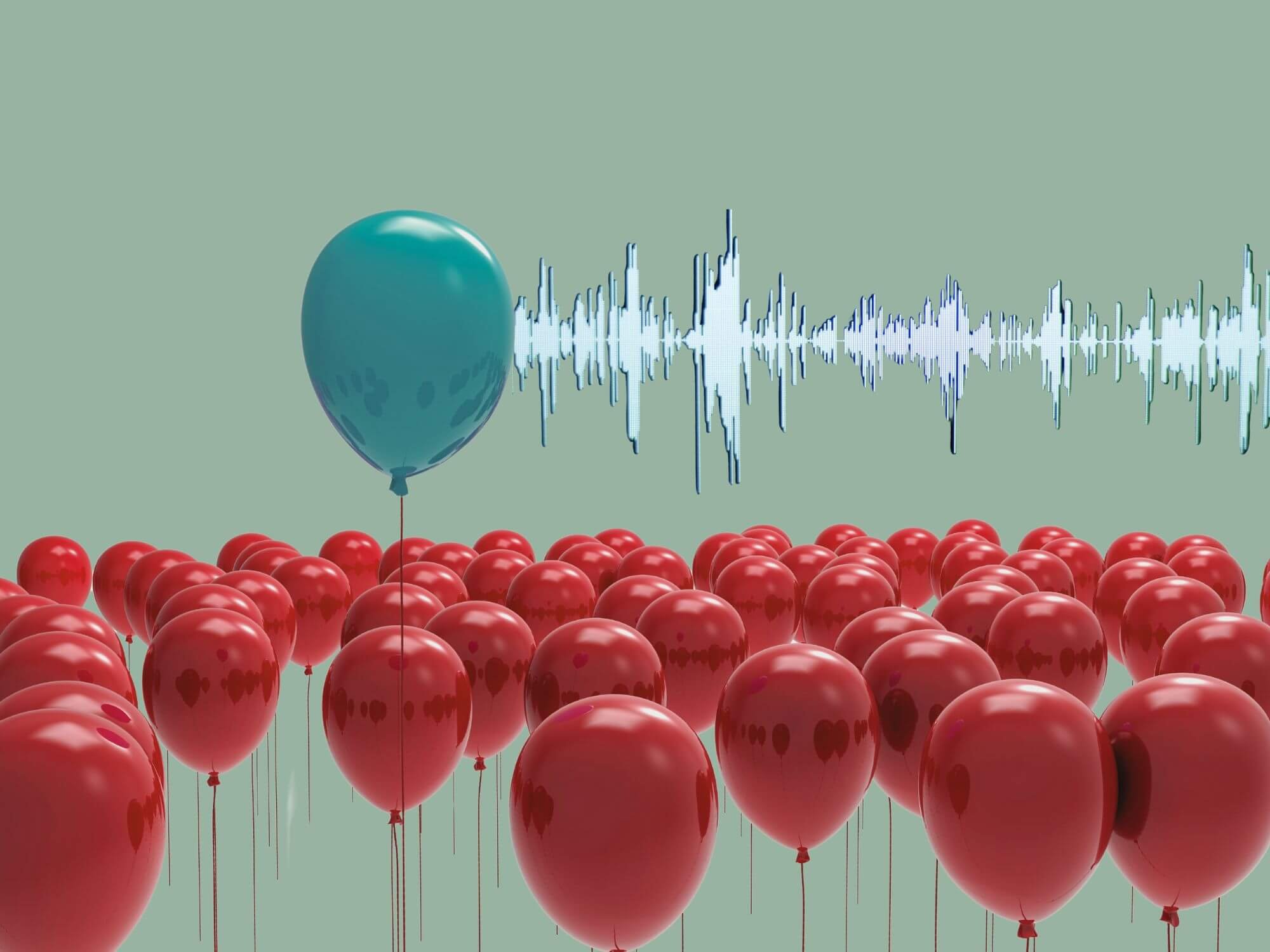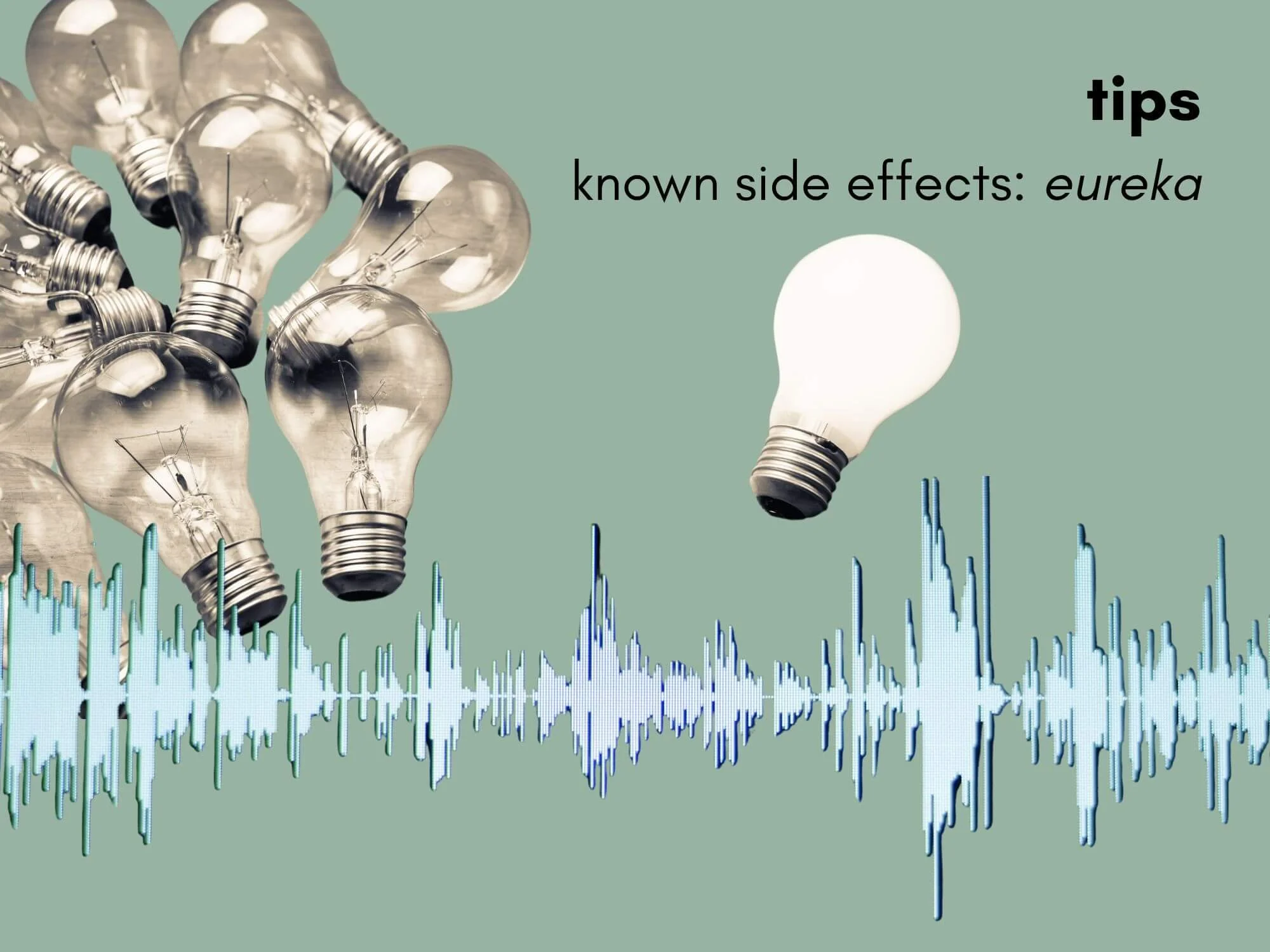Sonic Branding for Musicians (defining your unique voice)
As a musician, your sound is your product and your service. It’s your image — your brand. It represents all that is you (musically speaking). So this is a guide on sonic branding for musicians.
Let’s do this.
What Is Sonic Branding?
Sonic branding is picking and using specific sounds that represent your brand image and artist identity.
For musicians, sonic branding is the tonal quality that makes your music personal and stand out from others. For example, the distinct vocal vibrato of Post Malone or Devendra Banhart are immediately recognizable to fans.
And the violin layered on top of electric guitars gives Yellowcard a particularly unique pop punk sound (old school reference, I know).
Sonic branding is the unique tonal identity you have. It shows up in the various “touch points” with your audience. Let’s look at some examples.
Examples of Sonic Branding
Netflix’s dong sound
Tim Henson’s unique guitar sound and technique
DJs or electronic producers adding their sonic signature
Krewella’s unique chants and punchy vocals
A singer’s tonal quality and style
Using a unique instrument (or a unique layering of instruments)
Your production/mixing style (vocal chains, use of particular effects, etc.)
Why Musicians Should Think About Sonic Branding
Obviously, sound is the main part of your brand. So sonic branding simply means being more intentional about the sounds you’re choosing.
But here are some specific benefits:
Make creative decisions quicker
Stand out and boost your creative authenticity
Make music with more intention
Craft and fine-tune your original sound
Make your brand and music more memorable and recognizable
Enhance your personal story and artist identity
Clarify and bridge the gap between your visual and audio messaging
How to Do Sonic Branding for Musicians (7 tips)
1. First, Define Your Artist Identity
Who are you as an artist?
What is your visual identity, personality, image and nuance?
Clarity around these details guides your sonic branding (among other things). Because, love it or hate it, you are more than your music.
Your ideas, fashion, social connections, hobbies, personal story, color schemes and beliefs all shape who you are as a musician. They reflect your image and your sound.
For example, imagine Elvis Presley. Now, be honest, did you imagine his music or his clothes first? Both are iconic and both represent his musical brand in different ways.
Your brand is multidimensional and nuanced. And defining as many parts as you can will help in your sonic identity exploration.
Explore more:
➤ Find Your Artist Identity
2. Identify Your Current Sonic Profile
Describe your music.
What adjectives, words and influences encapsulate your musical identity and sound?
Identifying your current tonal vibe will give you clarity and direction for more intentional sonic branding.
This is an extension of tip one, which focused on the external attributes of your brand (outside of music). So now, consider these questions to define your current sonic profile:
What’s your genre?
What instruments do you use?
What emotions does your music evoke?
Who and where would play your music?
3. Define Your Ideal Sonic Profile
At this point, you’ve clearly defined your brand image and your current sound.
Now you can think about your ideal sonic profile. This means listing out the sound characteristics you hope to portray. You likely have an image in your mind of how you want to be heard and perceived. So let’s create that persona.
Try to turn that image into specific adjectives and descriptive words. Consider these questions:
Who are your idols? What parts of their sound do you like?
What artists live on your fan’s go-to playlists? What do they sound like?
How do you want people to perceive you?
Describe your ideal sound and genre
How big is the gap between here and where you are right now?
Once you get clear about how you want to be heard, you’ll have a destination (a sonic brand) to move towards. You can then start to close the gap by creating that sonic brand.
4. Ask People
Everyone hears your music differently. I even hear my own songs differently depending on my mood and the context of my life.
Sonic brand clarity does better with a little outside perspective. It creates objectivity.
So the goal is to figure out how your music is actually landing with people. Because sometimes, the responses can surprise you (especially if you’ve never asked anyone before).
Here are some ways to get actually helpful insights (not just random social comments):
Join musician communities
Use surveys (if you have an existing audience)
Get professional feedback (from a producer, music coach, etc.)
Ask your friends and family (as a last resort)
It’s probably best to ask strangers and keep things more anonymous. Because you know, friends and family are amazing but they’re usually a bit biased.
5. Do A Total Detox
To know yourself and your music truly, stepping away helps.
Social media, trends, other artists and algorithms all influence your writing and creative process. They can “distort” your authentic sound. So the best way I’ve found to get back to my default musical state is to simply step away.
Untether yourself from the outside world.
Whenever I do this, I always (re)find my voice. I’m able to write music more intuitively and freely.
So turn off your notifications, stop listening to your favorite songs and focus on you. Do a total detox and let your creative mind reset to its sonic sounds without all the external influence.
Whether it’s just for a week or for many months, try stepping away to (re)discover your sound. Your sonic brand lives there, somewhere in between the notes.
6. Write With More Sonic Intention
A brand is solidified over time, through consistency and repetition.
A few songs or random bursts of clarity are great foundations, but generally don’t make the whole building. So, as with so many things, it’s important to keep showing up and create multiple projects with sonic intention.
For example, one of my tonal elements is travel-adventure sounds and themes. I want this to become a bigger part of my sonic branding, but I realized I wasn’t prioritizing this as much as I should.
I would sporadically think about it, but usually it was just an afterthought.
So when auditing my music, I discovered most of my songs were lacking this sonic theme. Now, I’m trying to be more intentional. Here’s how:
Update old songs and projects
Create new music and content with my sonic brand in mind
Brainstorm creative ways to add more sonic travel themes
7. Remember: Creativity > Branding
Sonic branding is a cool strategy to clarify your musical identity. But don’t lose your creative play in its pursuit.
Branding can be a slippery slope that leads to a box of restrictions and limitations.
So always give yourself the room to keep trying new things and experimenting. Never throw away an idea simply because it doesn’t match your sonic brand. That’s dumb.
A musician and their sound is forever dynamic — just like all things in the universe.
Your brand and your style will evolve with time. Let it happen. Update the brand, don’t suppress the art.
Your current sonic brand may simply be a stepping stone, like the first chapter of a book.
(unless it’s a totally new direction, then you may start a new music project under a new name)
Later ✌️
Sonic branding is a way to stand out, boost your authenticity and add more intention to your songwriting and artist identity.
It’s that tonal quality about your music that people instantly recognize.
Discovering it requires a little bit of self reflection and work. Clarifying your artist identity, current sound and musical goals are all effective strategies. And stepping away from everything is one of my favorite methods.
But the most important thing to remember is that sonic branding shouldn’t replace or diminish your creative exploration and experimentation. Your brand is a living thing and will evolve with time. Let that happen and be open for change.
So, what’s your sonic brand?


